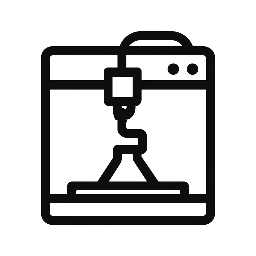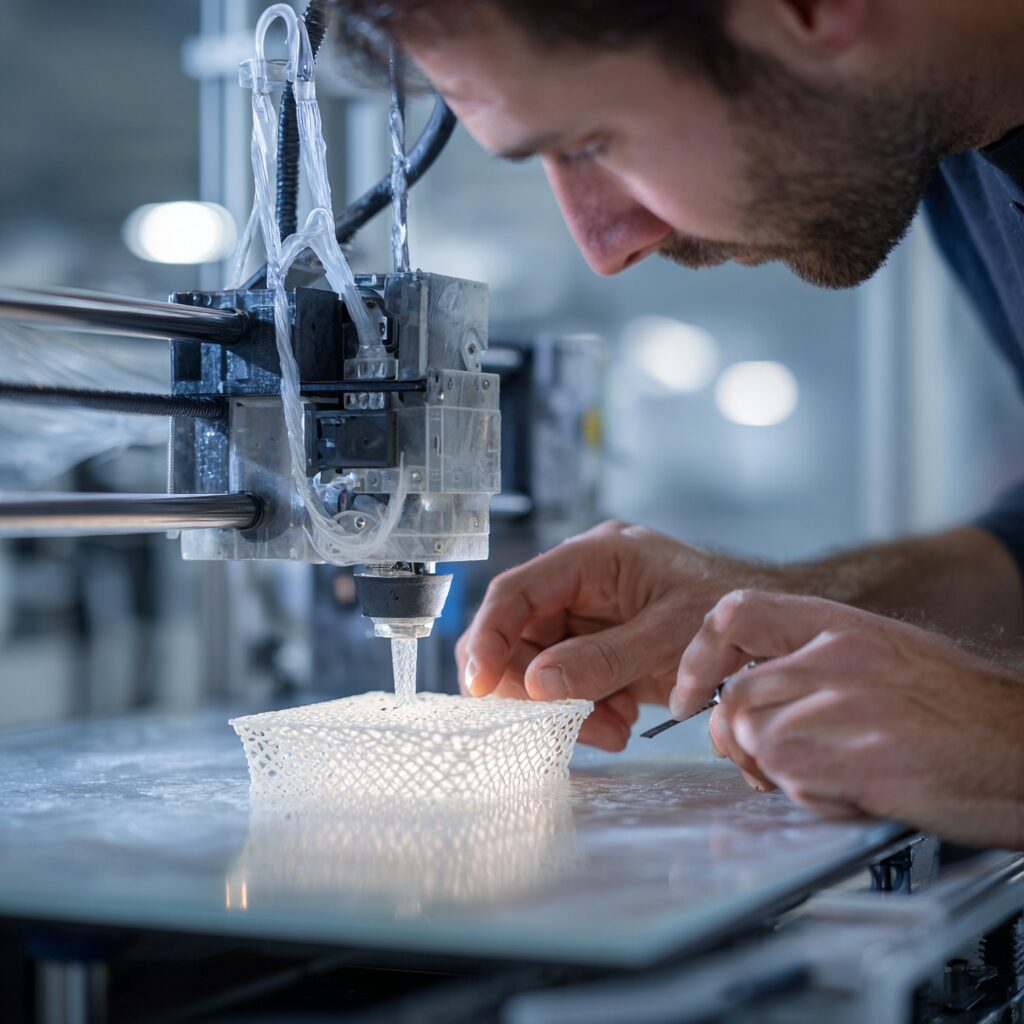A Global Perspective on Additive Manufacturing Trends
What’s changing, why it matters, and how to act—region by region, sector by sector
Executive snapshot
Additive manufacturing (AM) has crossed a threshold: from “faster prototyping” to an industrial capability that reshapes supply chains, part design, and product economics. The most important global shifts right now are:
-
Production, not just prototypes: Automotive, aerospace, medical, and energy are qualifying AM parts at scale—often starting with tooling/fixtures, then moving to end-use components.
-
Throughput + quality: Multi-laser metal systems, binder jetting, smarter polymers, and automated post-processing are pushing cost per part down while raising repeatability.
-
Software becomes the factory OS: AI-assisted design, in-process monitoring, and MES/QMS layers are stitching AM into the digital thread.
-
Localized, digital supply chains: On-demand spares, digital inventories, and service-bureau networks are reducing lead times and logistics risk.
-
Sustainability with numbers: Lightweighting and buy-to-fly improvements deliver measurable CO₂ and material savings—customers now expect LCA-backed claims.
1) Technology landscape: what’s maturing fastest
Metals
-
LPBF (laser powder bed fusion): More lasers, better gas flow, and closed-loop melt-pool control → higher throughput with tighter variance. Ideal for complex, lightweight structures.
-
Binder jetting: Rapidly maturing for steels and nickel alloys; shines when you need volume and sinter-based economics.
-
DED / WAAM: Large, near-net-shape builds and repair of high-value parts (turbine blades, molds, marine/energy components).
-
Post-processing & inspection: Automated depowdering, heat-treat integration, and CT/ultrasound workflows are the hidden heroes of repeatability.
Polymers & composites
-
SLS & MJF: Workhorse platforms for functional nylon parts; dyeing/texturing and vapor smoothing are normalizing consumer-grade finishes.
-
Photopolymers (SLA/DLP): Dental, medical models, and microfluidics benefit from ever-better resins and accuracy.
-
High-temp polymers (PEKK/PEEK/ULTEM) & CF-reinforced: Growth in aerospace interiors, tooling, and e-mobility.
-
Large-format pellet extrusion: Cost-effective, fast tooling, patterns, and furniture/architecture.
Ceramics & specialty
-
Technical ceramics (alumina, zirconia, SiC) for wear/heat/chemical resistance; early momentum in semiconductor, dental, and energy.
-
Bioprinting (briefly): Rapid progress in tissues, scaffolds, and surgical guides—watch hospital point-of-care labs.
2) Software, data, and the “digital thread”
-
Generative/AI design & lattices: Parts are being re-imagined for function (thermal, acoustic, strength-to-weight), not just copied from machined designs.
-
Simulation & build prep: Distortion prediction, support optimization, and print-time estimation reduce trial builds.
-
In-situ monitoring: Cameras, photodiodes, pyrometers, and ML models flag defects layer-by-layer; traceability moves from PDFs to structured data.
-
MES/QMS integration: Job travelers, material genealogy, machine parameters, and QA records flow into PLM/ERP for audit and certification.
-
Security & provenance: Watermarking/serialization of digital parts and controlled file streaming protect IP in distributed networks.
3) Applications by industry
Aerospace & defense
-
Flight-qualified brackets, ducts, ECS components; heat exchangers and combustor hardware in trials.
-
MRO focus: DED/WAAM repairs for high-value parts; on-demand spares near bases and depots.
Automotive & e-mobility
-
AM’s beachhead remains tooling/fixtures (jigs, end-of-arm tooling), then short-run end-use parts and motorsport programs.
-
EV thermal management (manifolds, cold plates) and interior customization are next-wave opportunities.
Medical & dental
-
Patient-specific implants (cranial/maxillofacial), surgical guides, and porous structures for osseointegration; dental aligners and dentures are already at scale.
-
Point-of-care printing: Hospitals bring AM in-house for speed and personalization.
Energy, oil & gas, and chemicals
-
Qualified AM for burners, nozzles, and lattice heat exchangers; DED for refurbishment.
-
Harsh-environment materials (superalloys, corrosion-resistant steels) are priority recipes.
Consumer, sport, and lifestyle
-
Latticed midsoles, custom eyewear, helmet padding, bike components—where fit, damping, or weight matter more than BOM pennies.
4) Regional view: strengths and momentum
Europe
-
Strongest density of industrial AM OEMs and powder suppliers; Formnext remains the global launchpad.
-
Deep focus on standards, sustainability, and end-use metal production (Germany, France, UK, Nordics, Italy).
North America
-
Aerospace/defense and medical leadership; robust service-bureau ecosystem; RAPID + TCT and AMUG drive community knowledge.
-
Reshoring initiatives favor digital inventories and on-demand spares.
Asia-Pacific
-
China scaling polymer and metal capacity with aggressive cost curves; TCT Asia shows rapid materials/hardware iteration.
-
Japan excels in precision, materials engineering; Korea in electronics/tooling; Singapore as an AM policy and research hub.
Middle East & Africa
-
Energy and heavy-industry applications (on-site spares, repair); growing national programs (UAE, KSA).
-
South Africa has notable metal AM expertise.
Latin America
-
Brazil (aerospace/medical), Mexico (automotive tooling) tap AM via regional integrators and global service networks.
5) Economics & sustainability: the new business case
-
Cost per part falls when you (1) redesign for AM (consolidation, lattices), (2) increase utilization, and (3) automate post-processing.
-
Inventory to digital: Replace slow-moving spares with certified build files; manufacture where parts are needed.
-
Sustainability with math: Lightweighting reduces lifetime emissions (transport/flight). Near-net shapes cut buy-to-fly ratios and scrap. Expect customers to ask for LCA and recycled/reused powder rates.
6) Standards, certification, and risk
-
Adoption hinges on process qualification (machine + material + parameter set), part certification, and documented material genealogy.
-
The ISO/ASTM 529xx series underpins terminology and practice; sector-specific frameworks (aero, medical) add the final mile.
-
Build a controlled parameter library, lock down change management, and make quality data first-class—not an afterthought.


7) What to watch next
-
Binder-jet metals entering true serial production.
-
High-temp polymers & CF composites displacing aluminum in brackets, ducts, housings.
-
Automated depowdering/finishing turning AM cells into lights-out micro-factories.
-
AI in the loop: Self-tuning print parameters and defect-aware reslices.
-
Digital inventories at scale: OEMs monetizing verified part libraries with distributed manufacturing partners.
8) How to use tradeshows to turn trends into ROI
-
Arrive with a part family: Bring three candidate parts (one tooling, one spare, one end-use) and benchmark them booth-side with multiple vendors.
-
Map the stack: For each application, identify printer → material → software → post-process → inspection. Gaps kill scale.
-
Ask for data, not demos: Request Cp/Cpk, density/porosity, surface roughness post-finish, and total cycle time—including finishing.
-
Visit the materials aisle twice: First for discovery, second to shortlist suppliers who can support qualification, not just supply powder/resin.
-
Schedule plant tours: Many OEMs and service bureaus offer post-show site visits—where real capability (and automation) is visible.
9) A practical adoption playbook (12–18 months)
-
Readiness check: Governance, IP controls, and safety (powders, ventilation) in place.
-
Application discovery: Score parts on value drivers (weight, lead time, complexity, consolidation potential).
-
Design for AM (DfAM): Redesign at least one part for function—not one-to-one substitution.
-
Pilot cell: Lock parameters, material lots, and inspection workflow; capture every datum.
-
Scale with MES/QMS: Connect to PLM/ERP; automate travelers, genealogy, and NCR loops.
-
Supplier strategy: Mix of captive capability and qualified service bureaus for surge and geography.
-
Business case & LCA: Track cost/lead-time deltas and carbon metrics; communicate wins to leadership and customers.
Bottom line
AM is no longer a single machine or a single department—it’s a stack and a strategy. Regions will differ in emphasis, but the direction is uniform: smarter parts, shorter supply chains, and factories where software, materials, and machines co-evolve. Use the global tradeshow circuit to validate vendors, gather hard data, and turn this momentum into qualified parts and measurable P&L impact.


Leave a Reply